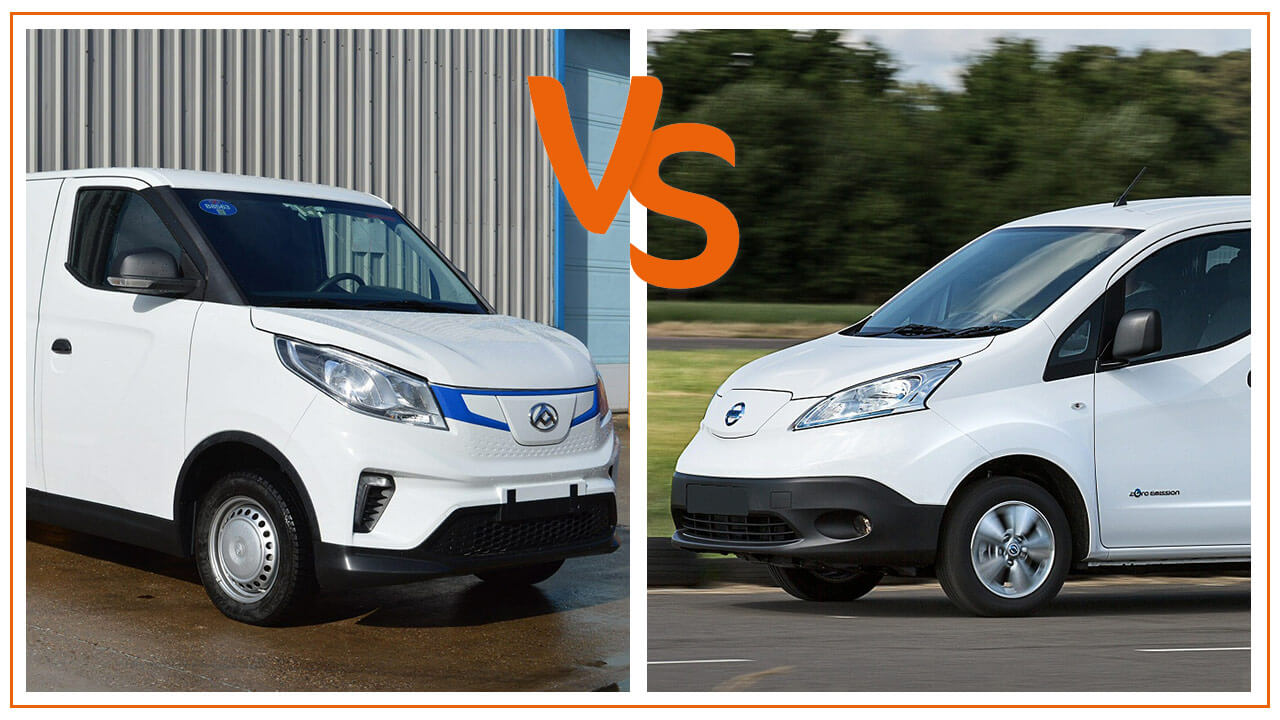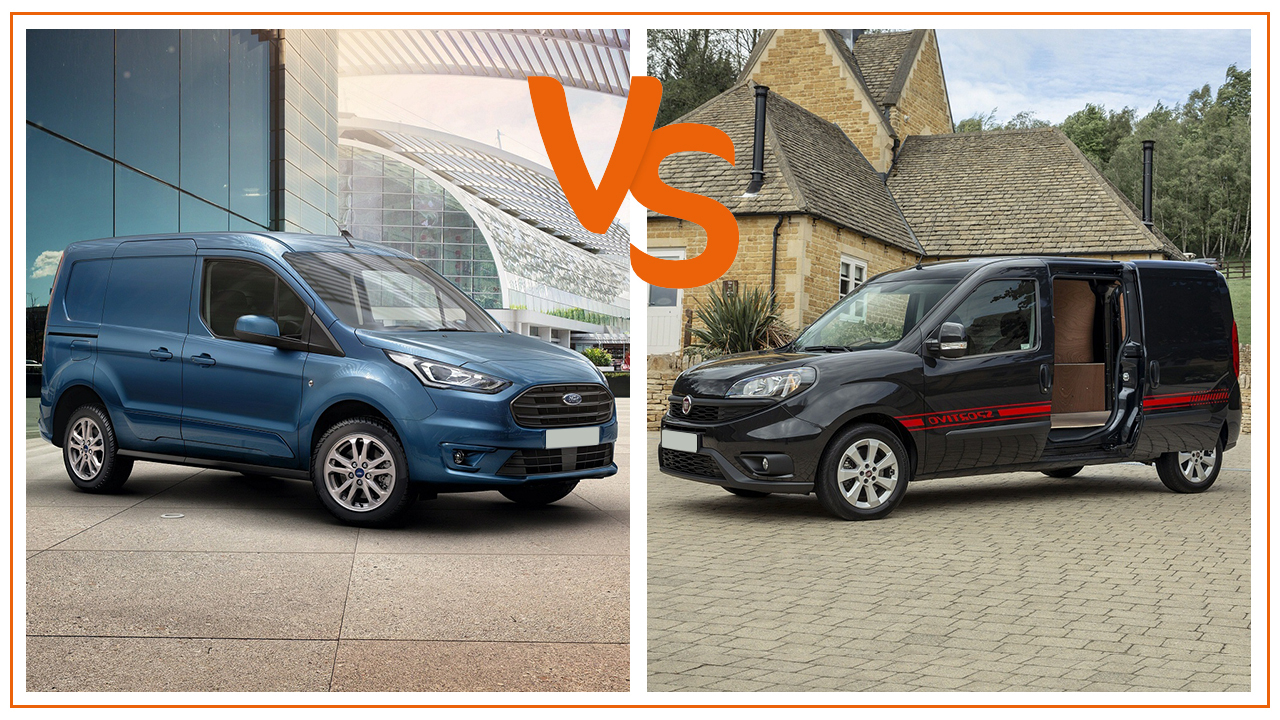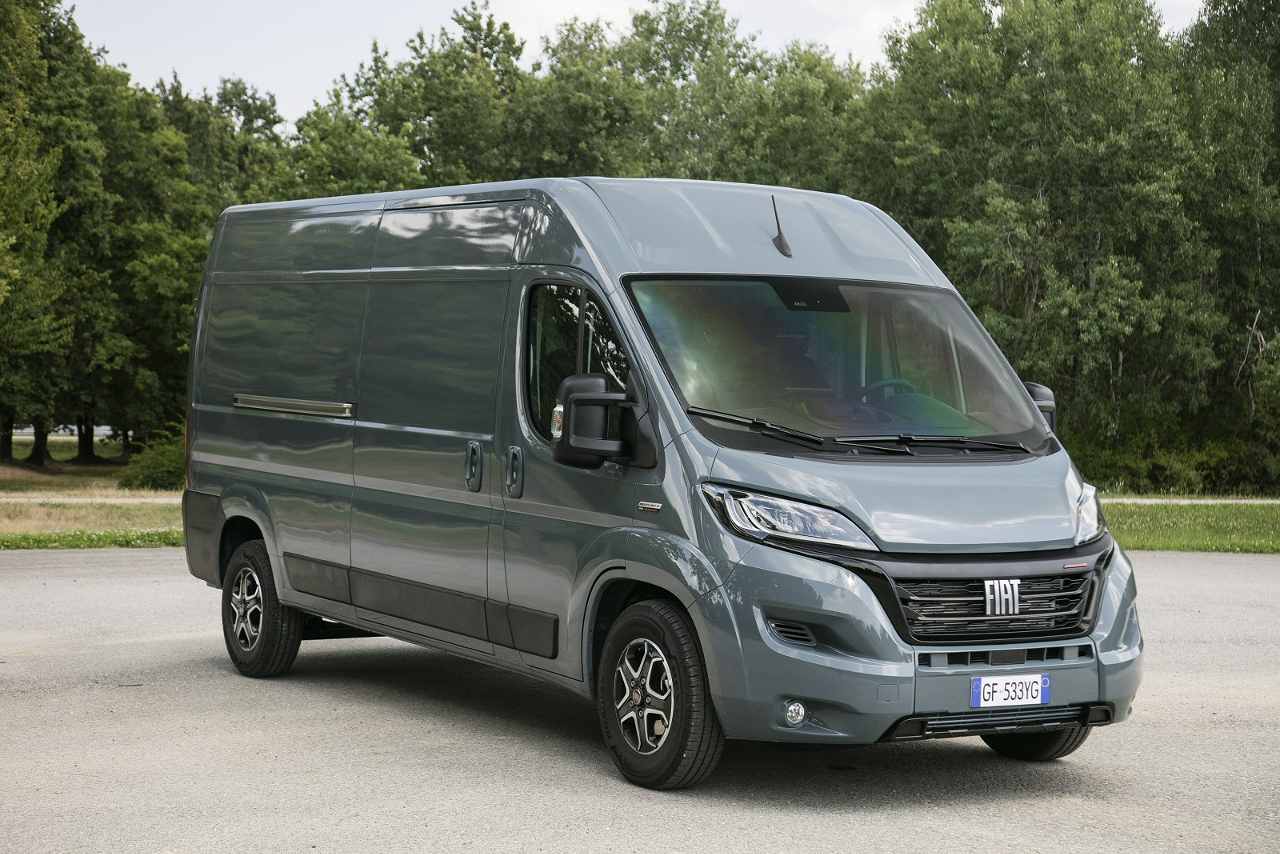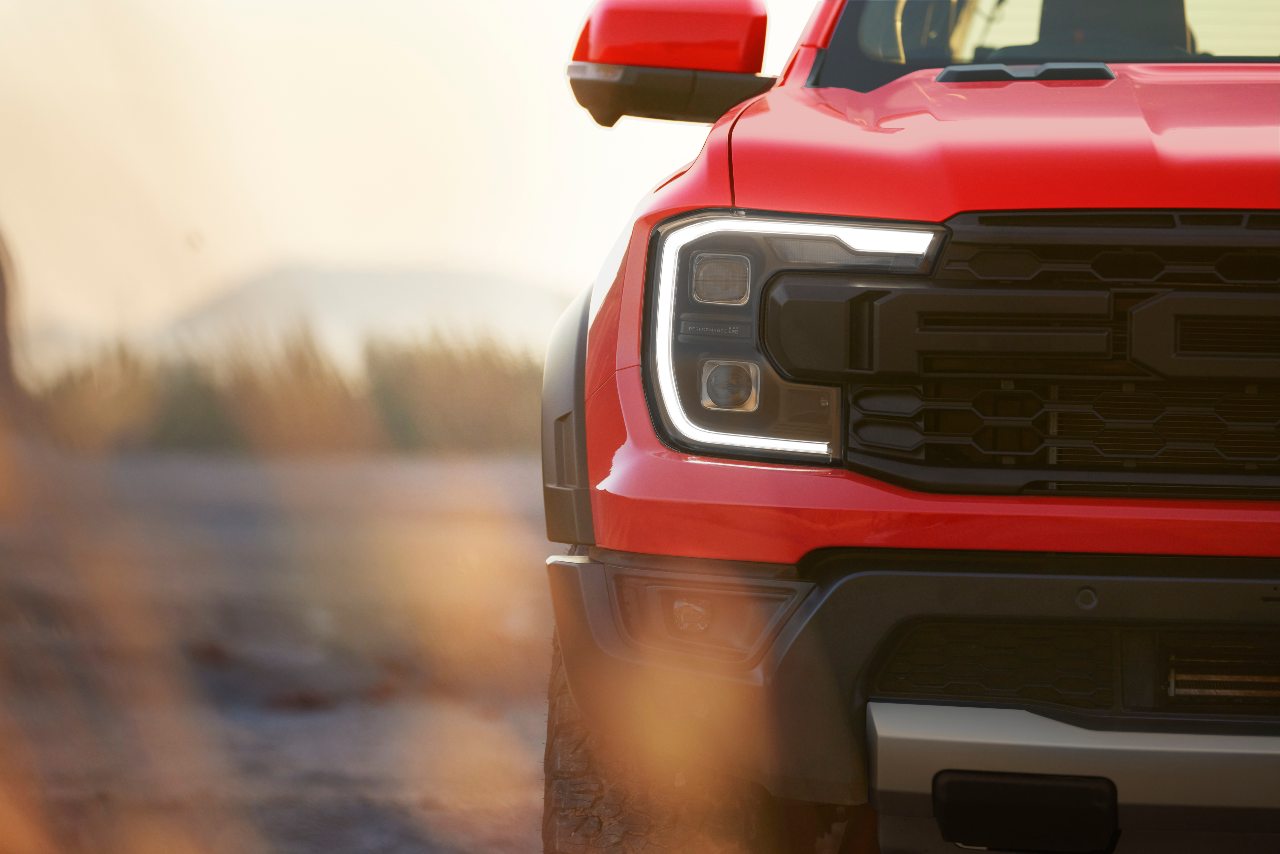The switch to electric vans is coming sooner than we all anticipated after the government announced standard engine vehicles would stop being sold by 2030. At the moment, small electric vans are proving the most popular way to make the leap to electric, so we asked Vanarama Van Expert Tom Roberts to compare 2 of the best on the market right now - the Maxus eDeliver 3 & the Nissan e-NV200.
I can already tell this article is going to be electrifying (tee hee) simply because of the vehicles I've been asked to compare.
The Maxus eDeliver 3 is the first purpose-built electric van available to lease in the UK today. Launched in 2020, it is designed to be an electric van - there was no previous diesel version. It is small, made of lightweight alloys & can pack a 1,020kg payload in its capable loading bay. On the other hand, the Nissan e-NV200 is based on the diesel-powered NV-200 small van that's been around for years, but it's proved so successful that Nissan has actually stopped making diesel versions & now only makes the electric ones. Pretty cool, eh?
So, in the blue corner we have the tried & tested Nissan e-NV200 & in the red corner we have the future-gazing Maxus eDeliver 3. Let's rumble!
External Looks
The Maxus eDeliver 3 doesn't have a lot of exterior enhancements with just 1 trim level, steel wheels & a charge point in the grille the only option. But that doesn't take anything away from the futuristic design (unmistakably of Chinese origin) which makes it look like a little like a 1970s retro-future milk float… in a good way. It is something genuinely new, designed specifically for purpose, so its looks had to make a statement.
Meanwhile, the Nissan e-NV200 - based on the stalwart NV200 platform - comes in 3 trim levels (Visia, Acenta & Tekna) with steel wheels or alloys, if you choose the Tekna trim level, fog lights & its charging point in the grill. Typical fair from Nissan, really. While the standard fuel versions of NV200s are long gone, the electric e-NV200 will keep the old familiar looks alive into the future.
Tom's winner: The Maxus eDeliver 3. It is a more exciting vehicle to look at, simply because it is new. Technological leaps in commercial vehicles need striking looks & Maxus has delivered them.
Under The Bonnet
Maxus has created an excellent reason to switch to an electric van with the eDeliver 3. This is largely thanks to its 90kw electric motor that offers drivers a peak torque of 255nm, excellent 0-62mph acceleration in just 11 seconds & a maximum speed of 75mph. The juice comes from either a 35kWh or 52.5kWh battery. The short wheelbase stats for the 35kWh battery break down like this: 6-hour charge time, 45-min fast charge to 80%, WLTP combined range of 99 miles & WLTP city range 141 miles. For the 52.5kWh battery, they break down like this: 8-hour charge time, 45-min fast charge to 80%, WLTP combined range of 151 miles & WLTP city range of 213 miles.
The e-NV200, however, packs an 80kw electric motor that provides a peak torque of 254nm, acceleration from 0-62mph in 14 seconds & a maximum speed of 76mph. The juice is supplied by a 40kWh battery (& that's your lot) with some impressive stats: 7.5-hours charge time, 40-min quick charge to 80% (although you have to request that functionality as an optional extra), WLTP combined range of 124 miles & an impressive WLTP city range of 187 miles.
Tom's winner: It's the Maxus eDeliver 3 again. The city range is over 200 miles, which is the sweet spot for these early electric vans, & the choice of 2 batteries (& the impact they'll have on price) allows the van to cater for different trade users
Cabin Comfort & Tech
For the first ground-up electric van, the Maxus eDeliver 3 is pretty well appointed inside with a 7-inch multimedia screen dominating the show. This screen features USB, Bluetooth & Apple CarPlay/Android Auto connectivity & an FM radio (but no DAB - the only sticking point). Drivers will also benefit from cruise control, air conditioning as standard (awesome), reverse camera, rear parking sensors, electric windows & plenty of cabin storage - including folding seat back & tablet holder. That's a lot of bang for your buck & exactly what you expect in a van as futuristic as this.
However, the e-NV200 is a different story. Only the Tekna trim level gets a 7-inch touchscreen infotainment system, but this system includes Nav, DAB+ & the excellent NissanConnect EV telematic system so it's worth getting. All models get Bluetooth & USB connectivity, but only the Acenta trim level & above get rapid charging capability, cruise control, aircon & a rear camera. Electric windows are standard across the range, but the fold-down passenger seat with writing surface is only available in the Visia trim level - which is confusing.
Tom's winner: Electric vans should have it all or not, which is why the Maxus eDeliver 3 wins again. Yes, the Nissan e-NV200 is an older electric van, but they've had a long time to fix the confusing trim levels.
In The Loading Bay
For the Maxus eDeliver 3, the choice of 2 body lengths means I've got 2 sets of dimensions for you. Starting with the short wheelbase version, you'll find 2.18m of internal length, 1.33m of internal height, 4.8 cubic metres of cargo volume & a 905kg/865kg payload (depending on whether you choose the 35kw or 52.5kw battery, respectively). With the long wheelbase version, you'll find 2.77m of internal length, 1.33m of internal height, a larger 6.3 cubic metres of cargo volume & a 1020kg/990kg payload (depending on whether you choose the 35kw or 52.5kw battery, respectively). Accessibility is also excellent thanks to a side load door & 60/40 twin rear door arrangement. The van also features a bulkhead (nice to see in such a small van) & non-slip floor surfacing to go along with 6 cargo floor lashing rings.
The Nissan e-NV200 is much simpler with its single body style. No matter which trim level you choose, you'll get 2.04m of internal length, 1.35m max internal height, 4.2 cubic metres of cargo volume & a 705kg payload - simple as chips. Accessibility is also great with twin side loading doors & 60/40 twin rear doors. There's a steel bulkhead (which is, again, nice to see), 6 lashing points & you'll also get floor mats on Acenta trim models & up.
Tom's winner: It's the Maxus eDeliver 3 once more thanks to the top-whack payload of over 1000kg - exactly what you expect from a vehicle designed to be an electric van. It suffers from no platform reuse compromises, it simply does the job.
Tom's Takeaways
Don't let the fact that I picked the Maxus eDeliver 3 for my winner in each category make you think the Nissan e-NV200 isn't worth your time & money, because it absolutely is. If you're looking for a step into the world of electric vans then the e-NV200 has a lot going for it (if you choose the right trim level). It's just that the Maxus eDeliver 3 shows what electric vans should provide users "out of the box".
Electric vans are the future, so they should act like it. They shouldn't make drivers choose air conditioning as an option, they shouldn't make touchscreen infotainment systems something you have to ask for - you should get these things as standard. The Maxus eDeliver 3 is genuinely exciting because it understands that to be the world's first ground-up van, it has to do two things: be a good commercial vehicle & feel futuristic. It does them both brilliantly.
If you chose to lease either of these vehicles, you'd be driving around in one of the best electric vans on the market. But if you chose the Maxus eDeliver 3, you'd be driving around in the one that didn't make you compromise - even if the compromises you make with a Nissan e-NV200 are only very small.
If you enjoyed this article, check out this one about the best city vans currently on the market. Or, if you're in the market for a brand new van, head to our special offers page.






